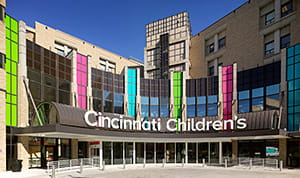
Nicklaus Children's Hospital offers a variety of dining options for both patients and visitors. They include the cafeteria, which is located in the advanced pediatric care pavilion, as well as the snack and vending vending areas. The hospital also has a Food and Nutrition Department that provides meals for inpatients. You can also buy room service gift certificates, which can be used to have meals delivered directly to your rooms.
There are more than a dozen cafeterias within the UPMC Health System. They offer healthy food as well as beverages. Many cafeterias offer special diets such as vegetarian options. You can also find a variety of hot beverages at these cafeterias, including Starbucks seasonal drinks and coffees.
Golden Club Cafe, one of the UPMC's cafeterias is located in Nicklaus Children's Hospital. This cafeteria is open for breakfast, lunch and dinner. The cafeteria also has a special foods station. You can also use your debit or credit card.
Eat Well Cafeteria, another UPMC caféteria, can be found on the seventh level of Shawn Jenkins Children's Hospital. This cafeteria is open for lunch and dinner from 6:30 a.m. to 8 p.m. on weekdays and on weekends. A small salad bar can also be found in the restaurant.

Other UPMC Health System cafeterias include Presby Cafeteria which serves more than 2,500 meals each day. Menus are determined by customer preference and cost. You may also request pick-up which is available 24 hour a day.
MUSC also has a cafeteria. It also has three main dining areas: the Medical Center, downtown campus, and Ashley River Tower. Visitors, patients' families, as well as patients, can access all three facilities. In the Medical Center's downtown location, you can find a wide range of international cuisine.
The hospital's cafeteria has a daily menu posted. There are many choices available, including pizzas by slice, sushi, burgers and other dishes. Patients and visitors have the option to curbside order. To do this, you must create an account. Substitutions are prohibited.
The American Dietetic Association distributes pamphlets at the hospital, urging diners not to eat fried foods or creamy sauces. Various healthy snacks can be found throughout the facility, including carrots, grapes, and bananas.
Several children's hospitals in the United States have their own cafeterias. Nicklaus Children's Hospital, for instance, has the Golden Club Cafe, which is open from 11:30 a.m. to 3:30 p.m. Each day, they feature a speciality of the day. On Tuesdays, for example, there is a "Pick 3" soup/sand sandwiches station.

Miracles Cafe is an alternative to traditional fast food and offers healthier options. Located in the Advanced Pediatric Care Pavilion lobby, the cafeteria offers Starbucks seasonal drinks, pastries, and more. You can have your food delivered to you room by ordering through the GET mobile app
The Hope Hospital cafeteria can be found open 24 hours a days and offers a variety menu. The foods can often be expensive depending on how much you weigh. A cafeteria was accused of offering unhealthy cookies.
FAQ
What are the benefits of having medical systems?
Many people living in poor countries lack basic healthcare facilities. Many people in these areas die before reaching middle age due to infectious diseases like malaria and tuberculosis.
People in developed countries get routine checks and see their general practitioners for minor ailments. But, many people still have chronic illnesses such as heart disease or diabetes.
Who is responsible in public health?
Public health is the responsibility of all levels. Local governments control roads, schools, parks, and recreation facilities. The laws and regulations governing food safety, workplace safety as well as consumer protection are enacted by both the national and state governments.
What does the term "healthcare" mean?
The delivery of services that promote good mental and physical health is called health care.
What are medical systems?
Medical systems have been designed to improve the quality of life and make it easier for patients to live longer and better lives. They make sure patients receive top-quality care when they're in need.
They ensure that the appropriate treatment is given at a timely manner. They also give information that allows doctors to provide the best possible advice to each patient.
Statistics
- For instance, Chinese hospital charges tend toward 50% for drugs, another major percentage for equipment, and a small percentage for healthcare professional fees. (en.wikipedia.org)
- The health share of the Gross domestic product (GDP) is expected to continue its upward trend, reaching 19.9 percent of GDP by 2025. (en.wikipedia.org)
- Healthcare Occupations PRINTER-FRIENDLY Employment in healthcare occupations is projected to grow 16 percent from 2020 to 2030, much faster than the average for all occupations, adding about 2.6 million new jobs. (bls.gov)
- For the most part, that's true—over 80 percent of patients are over the age of 65. (rasmussen.edu)
- Consuming over 10 percent of [3] (en.wikipedia.org)
External Links
How To
What are the four Health Systems?
The healthcare system is complex and includes many organizations, such as hospitals, clinics. pharmaceutical companies. insurance providers. government agencies. public health officials.
The goal of this infographic was to provide information to people interested in understanding the US health care system.
Here are some key points:
-
Annual healthcare spending amounts to $2 trillion, or 17% of GDP. That's almost twice the size of the entire defense budget!
-
Medical inflation reached 6.6% last year, higher than any other consumer category.
-
Americans spend an average of 9% on their health costs.
-
In 2014, over 300 million Americans were uninsured.
-
Although the Affordable Care Act (ACA), has been passed into law, it is not yet fully implemented. There are still major gaps in coverage.
-
A majority of Americans believe that the ACA should continue to be improved upon.
-
The US spends more money on healthcare than any other country in the world.
-
Affordable healthcare would lower the overall cost by $2.8 Trillion annually if everyone had it.
-
Medicare, Medicaid, or private insurance cover 56%.
-
There are three main reasons people don't get insurance: not being able or able to pay it ($25 billion), not having the time ($16.4 billion) and not knowing about it ($14.7 trillion).
-
HMO (health management organization) and PPO(preferred provider organisation) are the two types of plans.
-
Private insurance covers all services, including doctor, dentist, prescriptions, physical therapy, and many others.
-
The public programs cover outpatient surgery as well as hospitalizations, nursing homes, long term care, hospice, and preventive health care.
-
Medicare is a federal program that provides health coverage to senior citizens. It covers hospital stays, skilled nursing facility stays and home visits.
-
Medicaid is a joint federal-state program that provides financial assistance for low-income individuals or families who earn too little to qualify for other benefits.